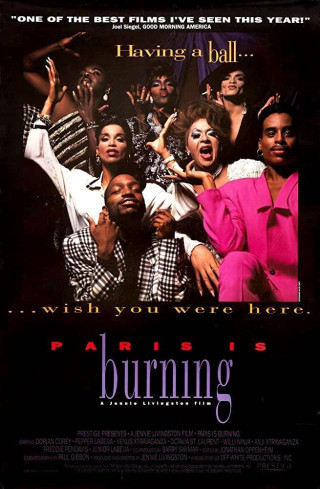It’s been nearly 34 years since Pepper LaBeija walked across the screen for a global audience in the opening of Jennie Livingston’s seminal documentary Paris Is Burning (1990). Rare glimpses into New York City’s Black and Latine drag balls of the ’80s were shown to a global audience by way of the widely celebrated and critiqued film.
Minutes into the film, Pepper LaBeija, “mother” of the Royal House of LaBeija, enters a red-walled multi-story venue with an Elk head tacked to the wall. A crowd cheers her on as she stuns in a lavish, overflowing golden gown, black gloves, and sunglasses. The West 129th Street venue in Harlem, once called Elks Lodge, became the Faith Mission Christian Fellowship Church in 1997, but the red doors of the congregation still nod to the iconic venue where queens competed in overnight balls for winning titles. While drag balls have not been held there for many years now, the site remains a significant landmark of LGBTQ+ history.
“Our balls are like our fantasy of being superstars,” Pepper LaBeija tells the off-screen interviewer, presumably Livingston, in Paris Is Burning. “A lot of those kids in the balls don’t have two of nothing. Some of them don’t even eat; they come to balls starving. They’re under 21; they sleep on the pier … They don’t have a home to go to.”
Livingston made the film between the mid- and late- ’80s against the backdrop of the peaking HIV/AIDS crisis, though it is seldom mentioned throughout its over 70-minute run time. Instead, interspersed interviews with ball figures, including Venus Xtravaganza, Dorian Corey, Kim Pendavis, and Octavia Saint Laurent, focus on dreams of fame and world travel, particularly to Paris. Interviewees reflect on their ball “house,” described by present-day House of LaBeija on its website as “a safe-haven for queer people of color and a home with a family for those who don’t have one.”
“We leaned toward the performative aspect and the found families. We tried to focus on how these people survived,” Livingstone said in an interview with Hyperallergic in 2019.
Elks Lodge is gone, but some of the ball houses first introduced to the masses through Livingston’s film are still around and flourishing. Today, the Royal House of LaBeija is a trademarked membership organization with chapters across the US, Europe, South America, and South Africa.
